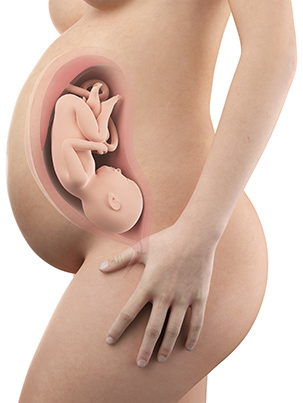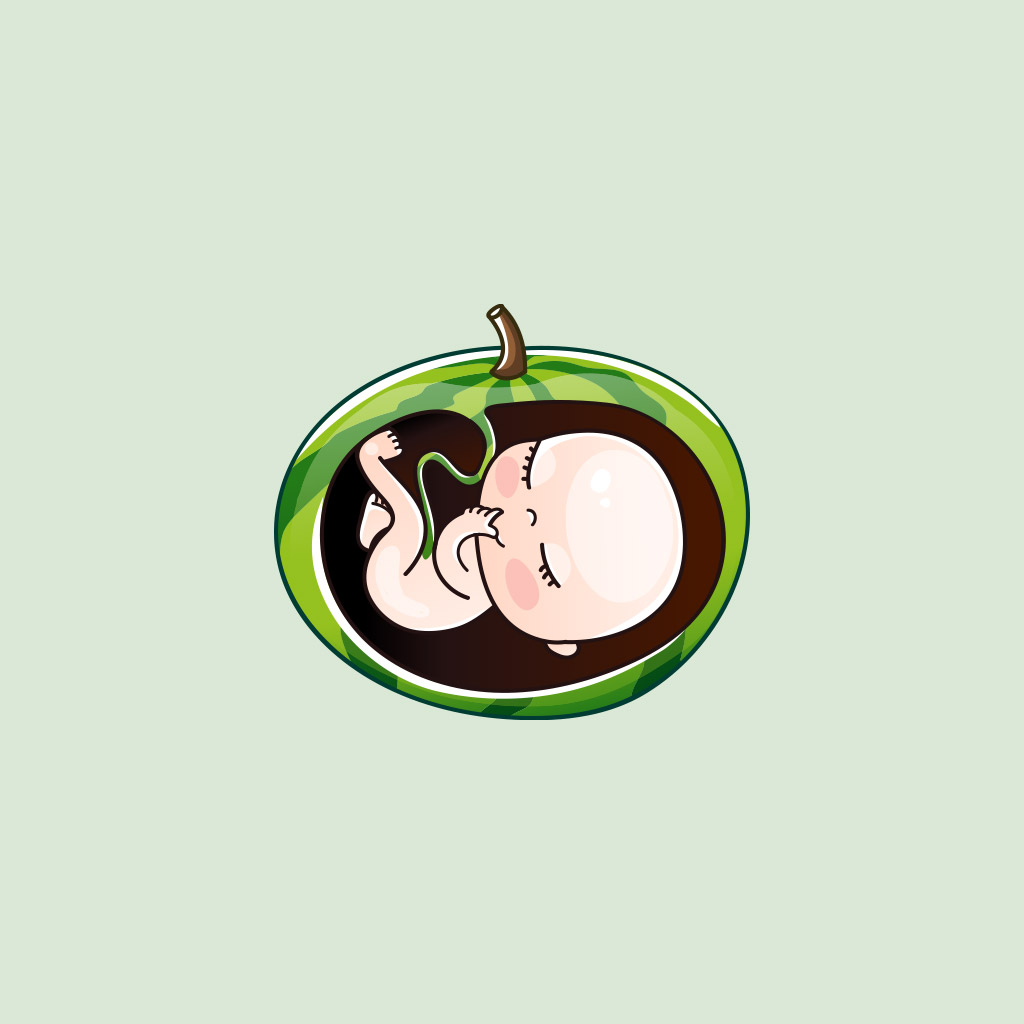Welcome to week thirty six!
These are the final weeks of your pregnancy and the excitement is building. You are probably becoming more and more uncomfortable, and many women become impatient during these last few weeks.
There is still very important brain and lung develop in the next couple weeks so hang in there! Now is a great time to do something that you enjoy, things that you might not be able to do with a newborn at home for the first few weeks.

Now is a great time to do something that you enjoy, things that you might not be able to do with a newborn at home for the first few weeks.
How my Baby Grows
- Your baby is the size of a head of romaine lettuce
- That fine downy hair called lanugo is disappearing
- Vernix that has thickened to cover and protect your baby will start to fade away the closer he/she gets to birth
- Your baby is likely the length that he/she will be at birth but still gaining about ½ a pound each week
- At the end of this week your baby will be considered full term if you go into labor
Symptoms Mama may Feel or Experience
- Your prenatal visits may now include cervical exams if you are having contractions, these may be a little uncomfortable initially if the baby is still high in the pelvis and the cervix is closed but they will be much more comfortable when you are in active labor
- The final laboratory test that your doctor or midwife will do is a vaginal/rectal culture for group b strep (GBS)
- This organism is present in a large percentage of women and not considered an infection when carried in the vaginal or rectal secretions of a woman, but it is a dangerous organism for newborns to come in contact with during birth if untreated
- If you are GBS positive, you will receive antibiotics while you are in labor and those caring for your baby will know that you were a carrier of GBS
- If you had this organism at any time during your pregnancy when a urine culture was done you will not be tested because you will be treated as a carrier
- Fetal position becomes important at this stage of the pregnancy because the easiest way for your baby to travel down through the birth canal is headfirst, your doctor or midwife will be checking each week to see how your baby is positioned in the uterus
- Your baby can be vertex which means head down
- Your baby can be breech which means something other than the head is positioned to come down into the birth canal, most often it is the baby’s bottom
- Another position that is less common is transverse which means that the baby is positioned sideways in the uterus
- If your baby is in any other position than head down your doctor or midwife may not be comfortable attempting a vaginal birth and may suggest a cesarean section if the baby does not turn before active labor
- A procedure called an external cephalic version (ECV) can be performed by some physicians trained to do so and you may also be offered this intervention
- Many times, the baby will change position completely on its own in the last couple of weeks but the closer you get to 40 weeks the less chance there is that this will happen
Thoughts to Consider
- Labor and birth are different for every woman and every pregnancy
- They tend to be longer in first pregnancies than subsequent ones but that is not always the case
- The better prepared you are with knowledge and realistic expectations the more satisfied you are likely to be with your birth experience
- The progression of labor is measured in three ways
- The first one is dilatation which goes from 0-10 centimeters as the cervix opens up
- The second is effacement which is the softening and thinning out of the cervix and is measured in percentages of 0%-100% when the cervix goes from 3-4 centimeters in length to being paper thin at 100%, this change usually happens first
- Finally, the progression of labor is measured in how far down into the pelvis the baby is located and is measured according to stations from -5 to +3 as the baby starts to crown or show his/her head
- Let’s talk a little about the stages of labor
- The first stage of labor is by far the longest and begins with regular contractions that change the cervix and it lasts until you are completely dilated
- It is divided into 2 phases, latent and active
- Latent labor may be many hours or even days of regular mild to moderate contractions that slowly change the cervix, unless you have a reason to be at the hospital or birth center this phase is best done at home where you can eat light meals, stay hydrated and move around in a comfortable environment
- Active labor starts when you reach 6 centimeters dilated and most women are in a birth facility by this time unless things are progressing very rapidly
- The second stage of labor is when you are completely dilatated and until the baby is born, this can take minutes (most common if it is not your first baby) to a couple hours if it is your first baby
- The third stage of labor lasts from birth to delivery of the placenta
- The fourth stage of labor lasts until your 6-week postpartum visit
Tips for a Healthy Pregnancy
- Now that you are close to your due date it is usually recommended that you not travel farther than 2 hours from the location of your hospital or birth center
- If you think that you might be in labor, stay hydrated with clear liquids and eat meals that are very light as digestion will slow down and the richer/fuller meals may make you nauseous
- Pack your birth bag and make sure that you have your baby’s car seat with you when you go into labor and head to the hospital or birth center
- Have family and close friends entered into the StorkAdvisor app under the “family and friends” button so that you can send quick group updates to those you want to know first-hand how things are going when you are in labor

Dr. Cheryl Sharp,
Certified Nurse Midwife
Chief Content Officer
Chief Content Officer


